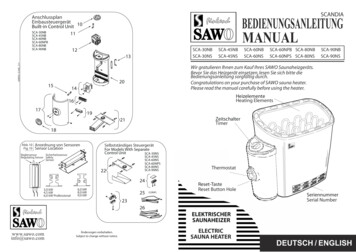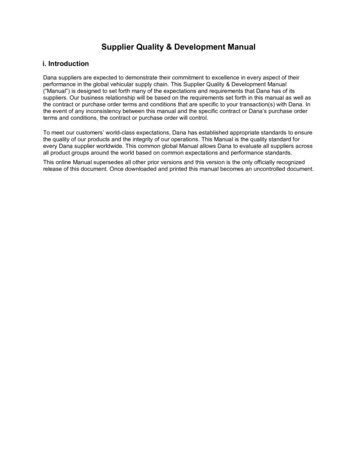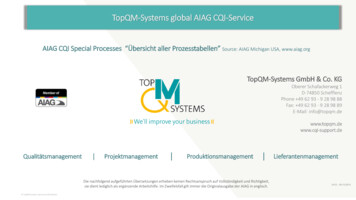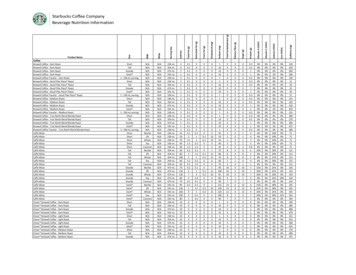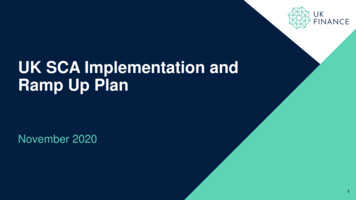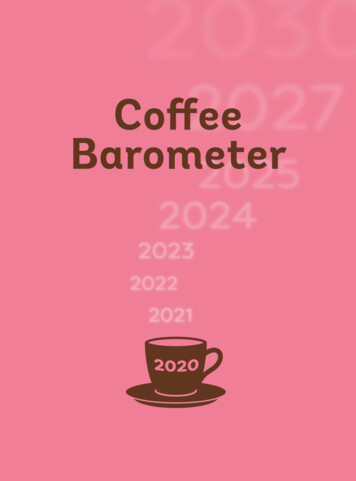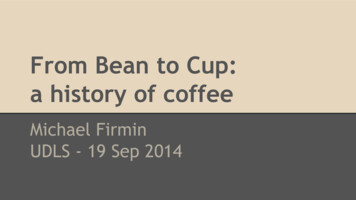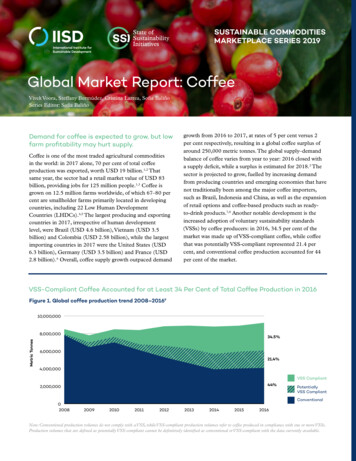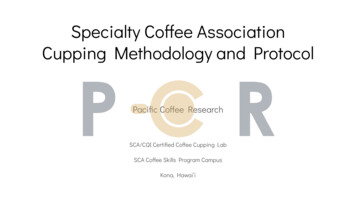
Transcription
Specialty Coffee AssociationCupping Methodology and ProtocolPacific Coffee ResearchSCA/CQI Certified Coffee Cupping LabSCA Coffee Skills Program CampusKona, Hawai’i
Background on the SCA Coffee Cupping System The goal: To evaluate the quality of roasted coffee Cupping was originally designed for defect detection in the cup Categorize coffee as Specialty or not specialty grade based on 100 point scoringsystem Evolved as a practice to evaluate sensory characteristics and their intensities Specialty Coffee Association The Coffee Cuppers Handbook: First written publication on cupping protocol Shifted from the “craft” of cupping based on experience and practice to a “scientific”approach Coffee Quality Institute Develop a form Training, calibration, license Q Graders, global reach
Evolution of the Scoring Form
SCA/CQI Cupping Definition“Coffee cupping is a method used to systematically evaluate the aroma and taste andtexture characteristics of a sample of coffee beans.” - Ted LingleWhy should cupping have standardized methodology? Standardized language to aid in clear communication between cupper and othermembers of the supply chainStandardized protocol to maintain consistent resultsStandardized calibration and training through CQI - Licensed Q Arabica Grader
Cupping Standards: Preparation Roasting Environment Coffee Measurements Coffee tools
Cupping Standards: Steps of Preparation1.2.3.4.5.6.7.8.Weigh coffee in individual cups as whole beans. 5 cups per flight of coffee.Grind individual cups and flush between different coffees. Evaluate dryfragrancePour water (calibrated to 125-175 ppm TDS) into each cup at 200 (198-203 /92-95 )Steep (allow to brew undisturbed) for 3-5 minutes. Be consistent from flight toflight.Break the crust and gently stir three times. Evaluate aroma.Skim the surface to remove bubbles and grinds left floatingContinue to steep and let cool to 160 , about 8-10 mins. Be consistent fromflight to flight.Aspirate and taste; rinse, spit, document, and repeat until cooled to 70
Cupping Form
Cupping Standards: Table and Cup NumbersPurge /Rinse cup
Cupping Standards: Table and Cup Numbers24Purge /Rinse cup31123545
Cupping Form: TerminologyDefects - Negative or off-flavors that detract from the quality of the coffee. Defects must beclassified as a taint or fault and then identified or described. (Ie. ferment, phenolic, mold)Taint (-2 points per cup)Fault (-4 points per cup)An off flavor that is noticable but notoverwhelming.An off flavor usually observed in botharomatic and flavor aspects of the sample.It is overwhelming and may render thesample unpalatable.
Cupping Form: Completed
Who Uses the System Producers Buyers Processing decisionsVariety selectionStandard communicationwith producers Processors Coops Importers RoastersConsumers Marketing
Pros and ConsAdvantages Standardized calibration Comprehensive CQI program Communication through a globallanguage Purchase insurance Market discovery! World Coffee Research - LexiconDisadvantages Defects’ impact on score Lengthy process Limited by standards of howa coffee should taste Subjectivity
Thank you!www.pacificcoffeeresearch.comInstagram: @PCR.coffeebrit@pacificcoffeeresearch.com
Cupping Form: Terminology Defects - Negative or off-flavors that detract from the quality of the coffee. Defects must be classified as a taint or fault and then identified or described. (Ie. ferment, phenolic, mold) Taint (-2 points per cup) Fault (-4 points per cup)
